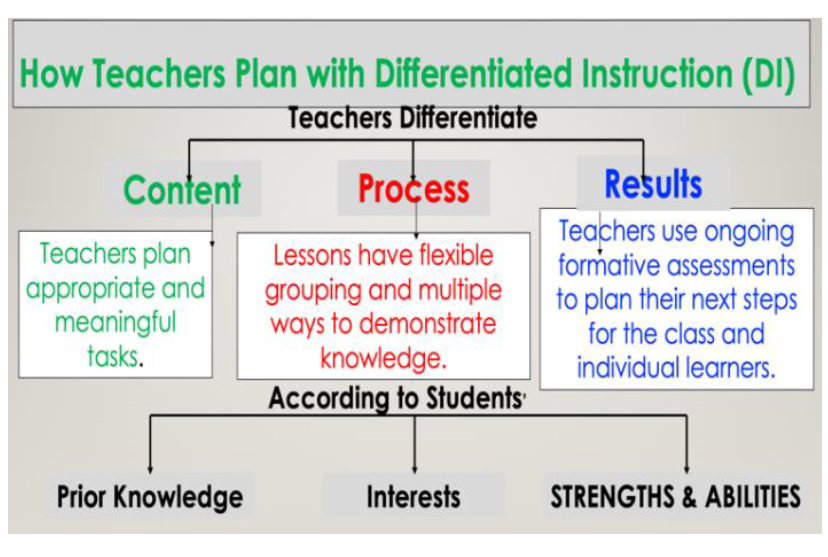Inclusion
2. Planning for Inclusion Success
Planning for student success in an inclusive classroom taps into what you already know about differentiation--planning for differences within content, process, and product. Teachers can use the same differentiation "map" when planning for gifted students, CLD students, 2e students, and non-gifted students with disabilities.Toby J. Karten (Courage to Risk, 2021), an expert on inclusion guides teachers in planning specially designed Instruction* for individual students and in using universal design principles and differentiating content, process, and results for students in an inclusive classroom. Her graphic below captures this planning process. Notice the emphasis on using students strengths and interests. This should be familiar to you from the Part 1 course. You will find many more resources on inclusion and differentiation from Toby Karten in our shared Google Folder.
*IDEA regulations define “specially designed instruction” as “adapting, as appropriate to the needs of an eligible child under this part, the content, methodology or delivery of instruction (i) to address the unique needs of the child that result from the child’s disability; and (ii) ensure access of the child to the general curriculum, so that the child can meet the educational standards within the jurisdiction of the public agency that apply to all children.” (34 CFR Sec. 300.39(b)(3)…. It is specific instruction that is delivered to the student, not differentiated instruction, accommodations, active learning strategies or other activities designed to facilitate learning for all students.
(Credit: UFT.org)
